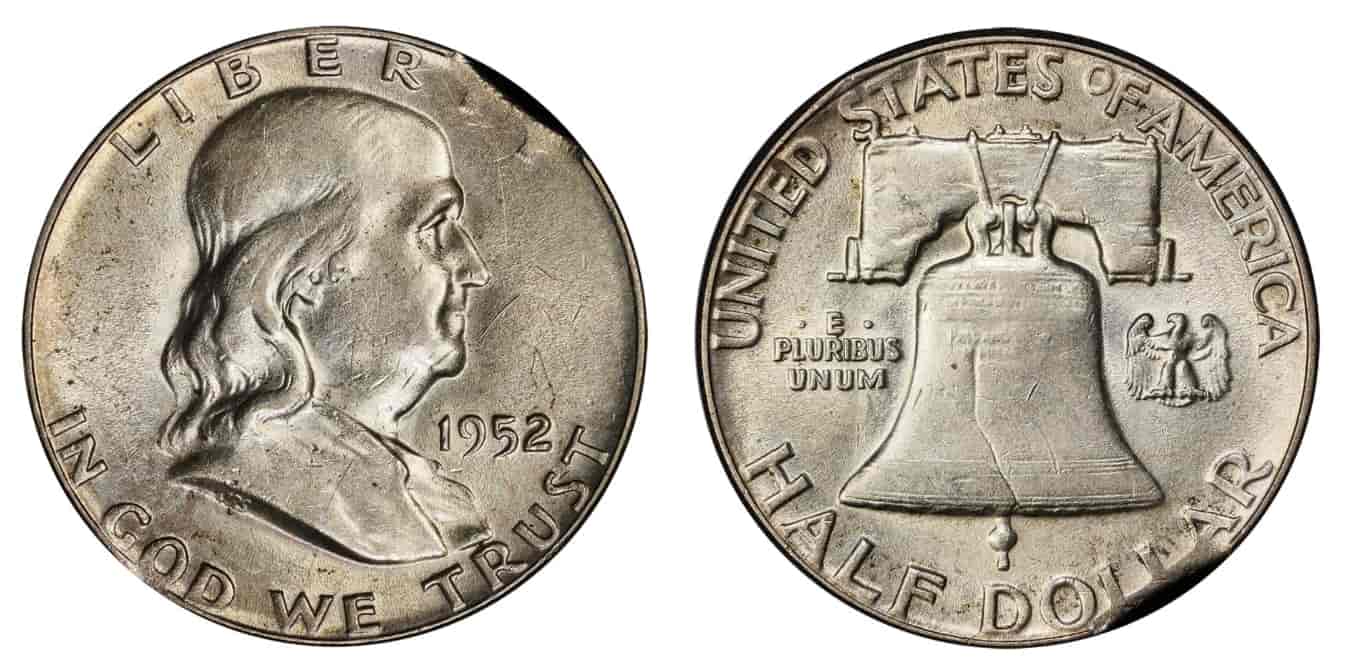Clipped Planchet Coins
Posted by Andrew Adamo - Numismatist & Rare Coin Dealer on Feb 27th 2025
Clipped Planchet Coins
Clipped planchet coins are a type of minting error that occurs during the coin production process. Specifically, the error happens when the blanking press, which punches coin planchets from a metal strip, malfunctions. This malfunction causes the press to overlap a previous strike, resulting in a planchet with a missing portion. The missing section typically exhibits a curved or straight edge, giving the coin a distinct appearance. These errors provide a glimpse into the mechanical processes involved in coinage.

Clipped Planchet Error Coins. How to Identify a Clipped Planchet Coin?
Identifying a clipped planchet coin involves looking for a few key characteristics:
- Missing Section: The most obvious feature is the missing portion of the coin, which will have a smooth, often curved or straight edge.
- Consistent Thickness: The coin's thickness should remain relatively consistent throughout, even at the clipped edge.
- Smooth Edge: The clipped edge should be smooth, not jagged or torn, indicating it was cut during the planchet production.
- Proper Diameter: The overall diameter of the coin may be slightly smaller due to the missing portion.
Types of Clipped Planchet Errors
Clipped planchet errors can vary in severity and shape:
- Single Clip: A single missing section, typically curved.
- Multiple Clips: Multiple missing sections, indicating multiple overlaps during the blanking process.
- Straight Clip: A straight edge, suggesting a different type of malfunction.
- Large Clip: A significant portion of the coin is missing.
- Small Clip: Only a small portion of the coin is missing.
Are Clipped Planchet Error Coins Valuable?
The value of clipped planchet error coins depends on several factors. Rarity, condition, and the severity of the clip all play a role. Coins with dramatic clips or those in uncirculated condition command higher prices. Additionally, the denomination and metal composition of the coin influence its value. A gold coin with a clipped planchet error will generally be more valuable than a copper-plated zinc coin with the same error.
Collecting Clipped Planchet Error Coins
Collecting clipped planchet errors can be a rewarding pursuit for numismatists. Here are some collecting tips:
- Handling: Handle coins by their edges to avoid damage.
- Storage: Store coins in archival-quality holders or albums to prevent deterioration.
- Authentication: Consider having valuable examples authenticated by reputable grading services.
- Research: Familiarize yourself with different types of clipped planchet errors and their causes.
- Condition: Seek coins in the best possible condition, with minimal wear and clear clipping.
Market Value
Market values for clipped planchet errors fluctuate based on rarity and condition. Common examples may be found for modest sums, while rare and high-grade specimens can fetch substantial amounts at auctions or through dealers. The type of metal used in the coin also plays a large role in the value. A gold planchet error will command a much higher price than a copper one. Check auction records and dealer listings for current pricing trends. Prices can range from a few dollars for common examples to hundreds or even thousands for rare and well-preserved specimens.
FAQ
What is a clipped planchet coin?
A clipped planchet coin is a mint error that occurs when the blank (planchet) from which a coin is struck is improperly punched, resulting in a portion of the coin being missing.
How does a clipped planchet error happen?
These errors occur during the blanking process. When the metal strip is being punched to create the coin blanks, if the strip doesn't feed correctly, a subsequent punch can overlap a previous one, "clipping" a portion of the new blank.
Are clipped planchet coins valuable?
Yes, generally they are. Their value depends on factors like:
-
The percentage of the clip.
-
The coin's denomination.
-
Its condition.
-
The rarity of the coin.
-
The coins grade.
How do I identify a genuine clipped planchet coin?
-
Look for a curved or straight edge where the coin is missing.
-
A genuine clipped planchet often exhibits the "Blakesley effect," which is a flattening or weakness of the rim opposite the clip.
-
Make sure that the missing portion is not caused by post mint damage.
What is the "Blakesley effect"?
It's a characteristic often seen on genuine clipped planchet coins. The impact of the strike can cause the rim opposite the clip to flatten or show a weakness in the design.
How much are clipped planchet coins worth?
Values vary widely. A small clip on a common coin might be worth a few dollars, while a large clip on a rare coin could be worth hundreds or even thousands.
Where can I find clipped planchet coins?
-
They can be found in circulation, although they are rare.
-
Coin dealers and online auction sites are also sources.
Are all misshapen coins clipped planchets?
No. Damage after minting can also cause coins to be misshapen. It is important to know the difference.
How do I know the percentage of a clipped planchet?
This is a visual estimation. Experienced coin collectors and dealers can usually provide accurate assessments.
Do certain coin denominations have more clipped planchet errors?
Errors can occur with any denomination, but certain production runs or minting facilities might produce more errors than others.
Information from these sources was used in the creation of this article:
Continue reading:
How Much Does a Morgan Silver Dollar Weigh?
How Much Does It Cost to Make a Dime?
What You Need to Know About the 1964 Kennedy Half Dollar
*This information is for educational purposes only. Bullion Shark is not responsible for any factual errors that may be contained in this post. This information is not intended for investment purposes. Please consult an investment advisor before investing.


